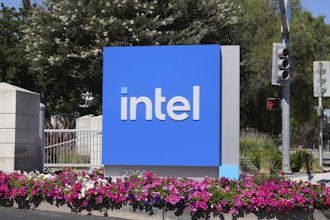The number one reason for a shipper to switch modes is cost. The larger and heavier the shipment, the greater the need for a shipper to switch to a less costly mode of transport. The number one reason a shipper does not always switch to the least expensive mode has to do with time.
A medical device shipper, for example, may send all of their shipments by overnight air by default for fear that sending the shipments by any other mode may mean that the shipments arrive late. A retail shipper may send the majority of their shipments by air because they do not always know what is needed in their stores 30 days in advance. A manufacturer or distributor may not always know if they have limited space for a product, or not know whether they are going to be out of stock of an item in advance, and choose to send shipments by ocean, which consistently causes delays, and ultimately, dollars.
What these shippers have in common is the inability to apply the knowledge that they receive to their shipping processes as soon as they receive it. While choosing to use a particular mode all of the time -- no matter what variables may arise -- may have its advantages in that the outcomes of using that particular mode are consistent and predictable, using a “blanket” mode also poses problems.
Attempting to cover oneself by using a particular mode that one hopes will work in all situations simply doesn’t allow a shipper to make real cost-saving decisions. By trying to cover themselves in all situations, shippers can unintentionally do their companies more harm than good.
What’s most frustrating for shippers who are pained by these issues is that it can be almost impossible to determine how much better they could be doing and how much more money they could really be saving.
The good news is that their frustrations can be significantly eased by making easy, if not simple, adjustments to their shipping systems. Our medical device shipper, for example, could build logic into their shipping system that automatically suggests that they switch to less expensive ground shipping for shipments being sent within 500 miles, since shipments being sent within 500 miles will still arrive the next day.
Our retail shipper could build logic into their system that interprets any information received regarding what may be needed in their stores 30 days in advance as soon as they receive it. This would enable them to send their shipments less expensively by ocean when they are able, since in these instances, they will know that they will be able to afford to wait the 20 some odd days that the merchandise will be on the water.
Finally, our manufacturer or distributor could build logic into their system that determines when they will have limited space for a product and when an item is likely to be out of stock so that they can switch to less expensive air in such instances.
If you think this all sounds great but are unsure as to what it means to build logic into your shipping system, or know that your company will have to dedicate unreasonable man hours to create and integrate components into your current system, you will probably want to outsource the project to a trusted third party. To select the appropriate third party, create a request for proposal (RFP) that reflects your company’s needs and that will allow you to assess the capabilities of any third party who will be responding to your request.
Ten key questions you may wish to include in your RFP are:
1. Are you able to put in place an automated routing tool that is able to check the contracted rates of all modes and carriers prior to booking the load?
2. Are you able to put in place an automated tool that can determine the exact weight break that will yield the least cost for each shipment?
3. Are you able to put in place a tool that automates the mode selection process by taking into consideration the contracted rates from all of our carriers?
4. Is your automated tool web-based? If so, does this web-based technology have the ability to be updated with new carriers, pricing and lanes immediately without requiring internal IT support?
5. How will you ensure that any automated tool is always up to date?
6. Will your technology take into consideration things like rising fuel costs and climate changes?
7. Will your technology determine whether using multiple modes is appropriate?
8. How will your technology determine the reliability of a particular mode so that we cut costs -- not customers?
9. Do you anticipate being able to integrate new logic into our current shipping system, or will you require that we put in place an entirely new system?
10. Will your technology allow us to begin to take control of the ways in which our employees around the world make decisions about modal changes?
Of course, if you choose to include any of the questions above, you will want to tailor them so that they reflect your company’s unique shipping characteristics. Undoubtedly, you will also want to add other questions of your own.
As with any RFP, no matter what you choose to ask of your potential third party automated system provider, you should make your questions as detailed as the answers you wish to receive. Do so, and you may just find that you will have taken the guesswork out of switching modes completely.
Niko Michas is President and Founder of BridgeNet Solutions, Inc., a Chicago-based firm specializing in helping companies to achieve supply chain cost reductions through data analytics software. For more information, visit http://www.bridgenetsolutions.com


















